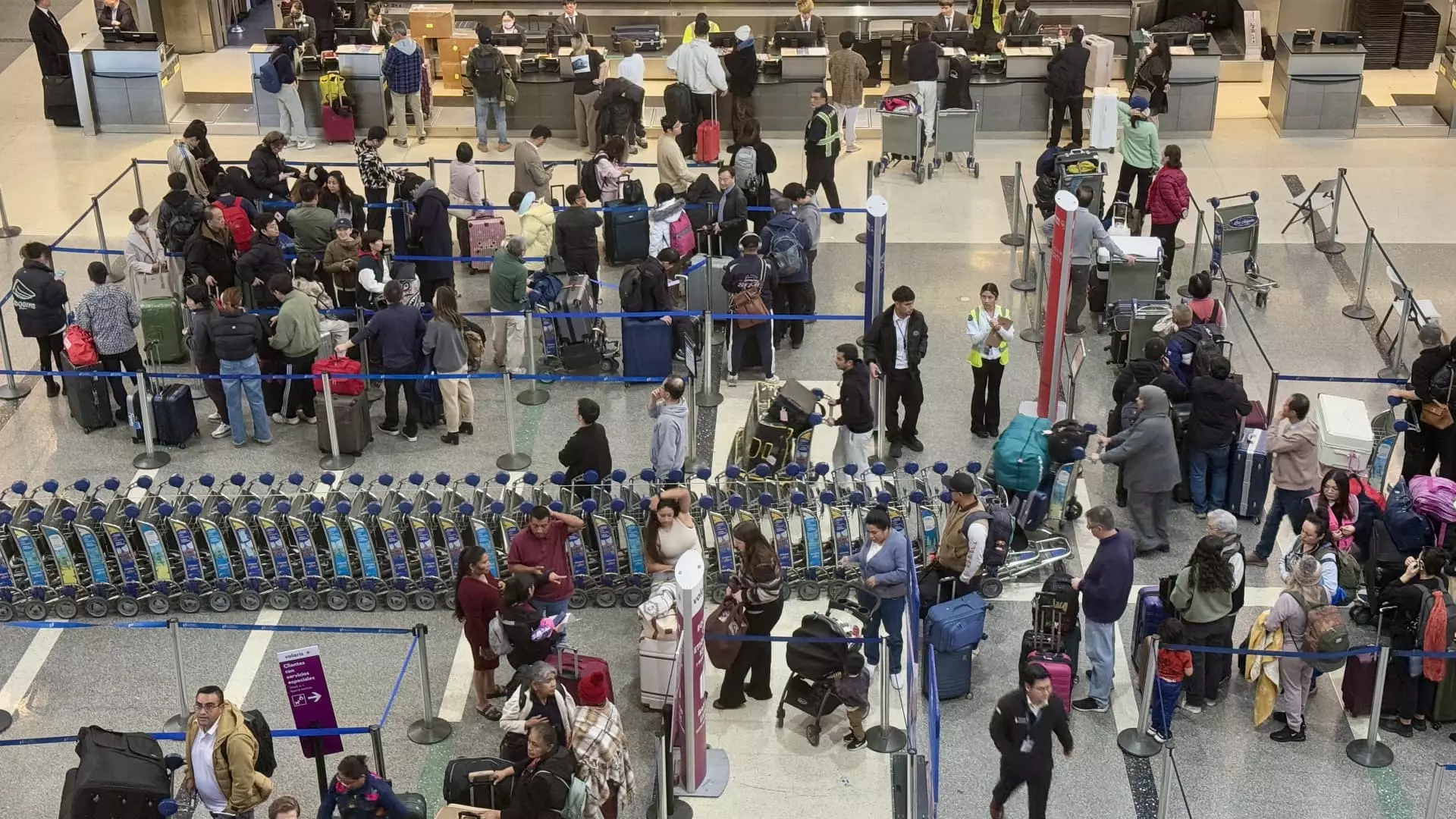The current fluctuating landscape of the U.S. economy often creates a sense of bewilderment among consumers. The term “deflation,” usually associated with economic dread, has recently crept upon us with a less menacing face. While the Consumer Price Index reveals that some prices—airfares, electronics, and produce—are declining, one cannot shake off the underlying current of uncertainty that persists. Ryan Sweet, chief U.S. economist at Oxford Economics, hints at underlying idiosyncratic factors but underscores a crucial sentiment: it’s fundamentally about supply and demand. The wave of lower prices might feel good now, but the examination of various contributing factors raises concern about their sustainability.
One of the critical issues is the volatility inherent in categories experiencing price fluctuations. The recent drops in airfare and consumer goods could be categorized as temporary aberrations rather than indicators of a structural shift in our economy. Mark Zandi from Moody’s underscores this sentiment, warning that consumers should not get too comfortable; these lower prices could vanish as swiftly as they emerged. The core reality is that consumer satisfaction is often fleeting and tends to be manipulated by economic policy and market forces.
Gas Prices: A False Zenith
Gas prices often stir controversy in any economic discussion, and the current narrative is no different. When former President Donald Trump boasted about gas prices falling to an outrageous low of $1.98 per gallon, the reality struck a sobering chord. According to the U.S. Energy Information Administration, that figure is far from the truth, as the average stands over $3. While it is true that gas prices have seen a decline of about 10% from last year, it hints at deeper issues like a falling economy that could jeopardize future gains. As crude oil prices plunge due to fears of an imminent economic slowdown, the market is misled into believing these reductions signify recovery.
The recent decision by OPEC+ to increase production may seem a boon for consumers in the short term. However, it does nothing to address the underlying tensions and risks that could drive prices back up. Zandi warns that producers will instinctively pull back their output if prices decline too far, which poses a direct threat to consistent low prices at the pump.
Airline Fares: Scarcity Amid Plenty
Taking a closer look at airline fares, which have seen a notable dip of over 5% in recent months, we must question the longevity of this relief. Lower demand from international tourists has contributed to this decline, fueled by geopolitical tensions that haunt the U.S. on a global scale. With statistics from the U.S. Travel Association noting a 14% drop in international visits, it becomes evident that lower prices are an artificial cushion rather than an indicator of true consumer confidence in the travel market.
Amid stagnating travel demand, airlines adjusted to a market that has shifted drastically. Is this what we want—volatile pricing based on instability rather than steady consumer trust? The decline in fares might soften the economic blow momentarily, but the repercussions could be more damaging than face-value savings convey.
Fresh Produce: The Hidden Costs of Deflation
When people celebrate the drop in prices for fresh produce such as tomatoes and lettuce, we must tread cautiously. With tomatoes down nearly 8%, it appears we’re saving money at the supermarket. However, the havoc caused by impending tariffs on imported goods, particularly from Mexico, slams the door on benefitting from lower prices for long. The complexities surrounding agricultural logistics, such as seasonal yield and tariff threats, expose consumers to the stark reality of economic manipulation where lower prices come at an unquantified cost.
Lower transportation costs, facilitated by cheaper diesel, certainly play a role, but this is a disparate victory if seen through the lens of economic policy revolving around trade wars. The precarious balances in agricultural pricing due to both market pressure and government action ultimately show that the safety net for consumers is both thin and frail.
The Problematic Nature of Technology Pricing
Interestingly, as prices for consumer electronics—televisions and smartphones—experience a decline as high as 14%, the narrative focuses on technological advancements and increased efficiencies. While it’s comforting to see lower prices for better-quality goods, the situation becomes murky when one considers the emotional and psychological dynamics played in pricing strategies. Companies often benchmark their sales strategies to take advantage of consumer expectations, prompting questions about the sustainability of price reductions.
Can we ensure that this technological progress translates to true value for consumers? The optics of falling prices can often mask deeper concerns about ethics in pricing and market accessibility. It leads us to consider whether consumers are genuinely benefiting or merely experiencing temporary relief in the face of broader economic uncertainties.
The evolution of the U.S. economy presents an intricate patchwork of trends, and while certain indicators may offer hints of optimism, the underlying fears and complexities should not be overlooked. Inflationary pressures, inconsistent policies, and shifting market demands could easily overturn any semblance of stability that might currently exist. It is imperative that consumers remain vigilant, lest they fall prey to the illusion of a recovering economy, which might instead be a mere façade masking turbulent realities.

